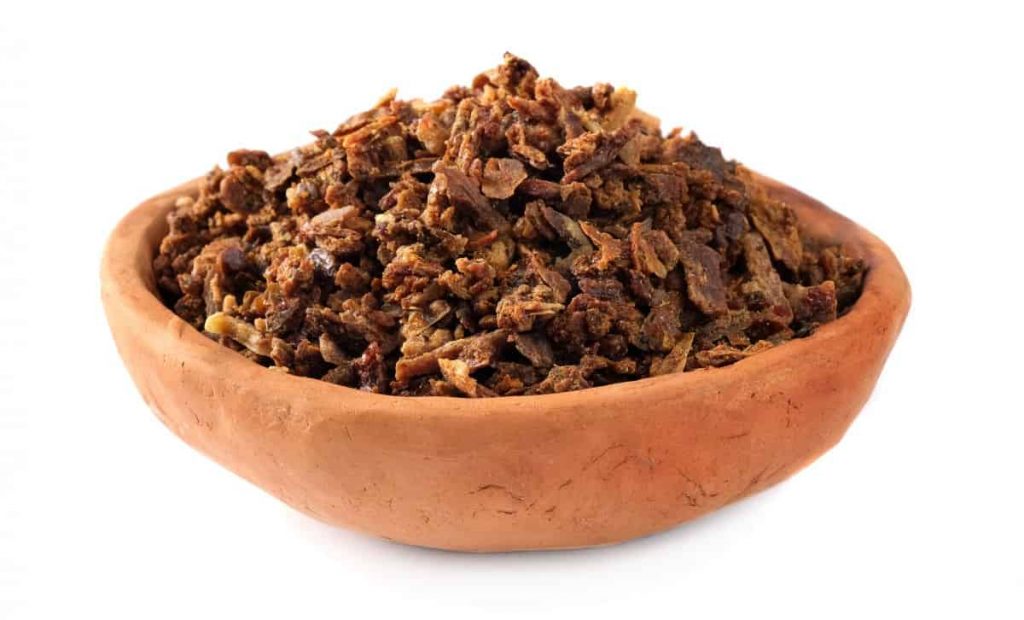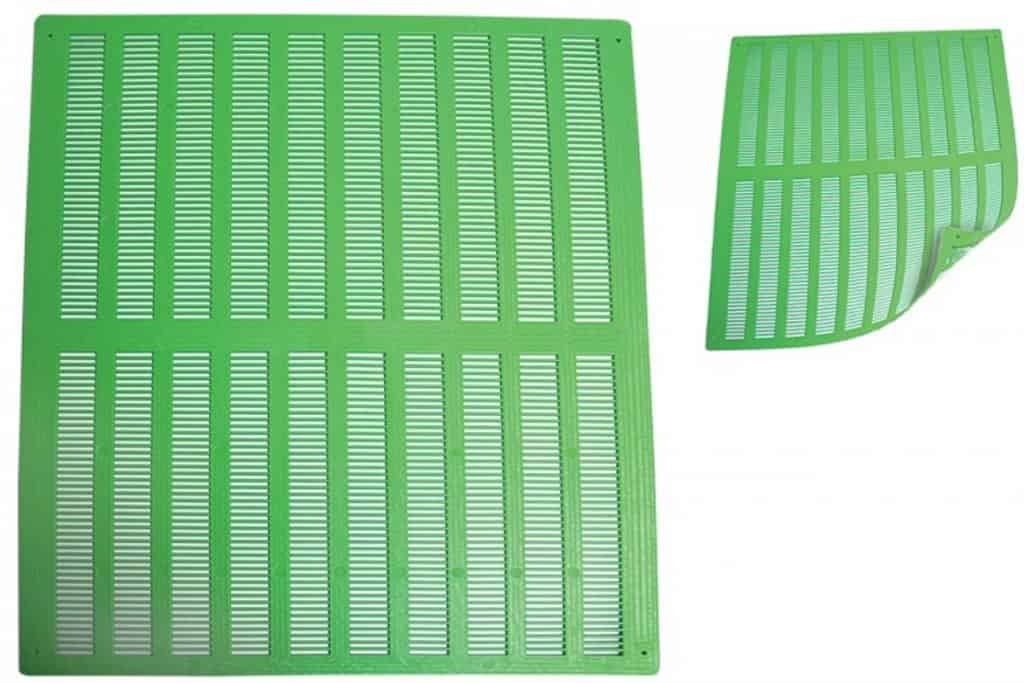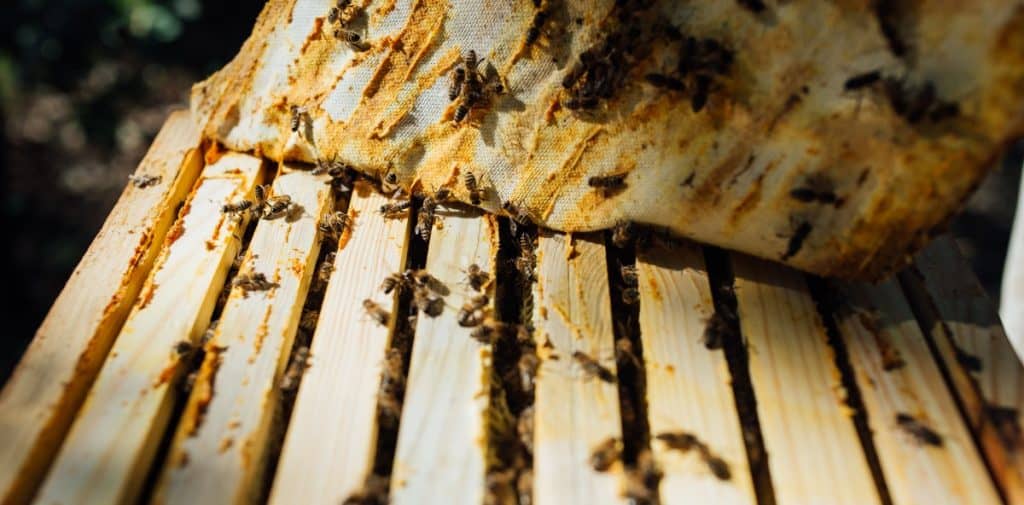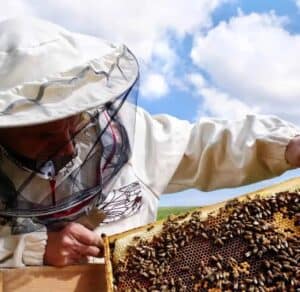Selling Bee Propolis: How Much Money Can You Make?
Have you thought of selling bee propolis (bee glue)? It is another potential income stream to help you turn a profit from your hives or at least alleviate your ongoing expenses. But how much money can you earn selling propolis?
By selling direct to retail customers, you can make between $9 to $15 per ounce for raw bee propolis, and between $18.50 to $35 per liquid ounce for extracts and tinctures. The prices will vary depending on the purity of the propolis, demand from your local region, and the propolis source.
If you’ve taken the time and effort to build strong honey bee colonies why not try to make some extra income from selling bee propolis. I’ll explain in more detail how much money you can potentially earn selling propolis and how to collect it.
Can You Make Money Selling Bee Propolis

As you gain more experience and continue to build strong bee colonies another good income stream is to collect and sell some of your bee propolis. Currently there is a strong market demand for harvested bee propolis for its potential health benefits.
You can potentially make a substantial amount of money selling bee propolis depending on the form you sell it in. Here is a list of some the most popular forms it is sold in:
- Granular Bee Propolis Chunks – either dried or frozen sold direct to consumers or other supply companies.
- Bee Popolis Extracts and Tinctures – the propolis is extracted using alcohol or water based methods. The extracts usually demand a higher price depending on their level of purity (percentage of bee propolis in the extract/tincture).
- Bee Propolis Powder – often demands a higher price.
- Bee Propolis Capsules – dried propolis in powder from placed in vegetable capsules. Dietary supplements sold to consumers and often combined with other vitamins and minerals.
- Creams and Salves – a very common form sold to consumers.
- Natural Soaps – liquid and bar soaps sold by quite a few natural soap companies.
- Oral Sprays and Drops – another very common form sold by many large and small beekeepers.
- Toothpaste – not as common as some of the above forms.
- Chewable Propolis Strips – not as popular but some beekeepers do offer these strips for sale.
I would recommend starting with selling your raw propolis chunks and see if there is a market for it in your local region. I’ve broken down the price range for selling bee propolis and extracts/tinctures based on country in the chart below:
| Country | Raw Bee Propolis | Extracts & Tinctures |
| United States | $9 to $15 per ounce | $18.50 to $35 per fluid ounce |
| Canada | $12 to $25 per ounce | $14 to $32 per fluid ounce |
| United Kingdom | £9 to £11 per ounce | £10 to £15 per fluid ounce |
| Australia | $27 to $48 per ounce | $24 to $55 per fluid ounce |
The price ranges I’ve listed above are based on the average retail prices demanded across a wide number of regions in each Country. They are very realistic price ranges but please keep in mind these are only estimates and I urge you to double check the pricing being demanded in your local region.
For some beekeepers it is worth the time investment to harvest bee propolis and sell it themselves direct to customers or simply to other supply or health supplement companies.
You can sell your bee propolis to wax rendering businesses. They will usually purchase the propolis off of you for any quantity. In some cases they will even take the hive scrapings if they have a means of purifying it.
Supply companies will pay around $20 per pound for clean bee propolis. This price will vary by region but if you don’t wish to sell direct to consumers this may be an option for you.

All propolis sold to consumers needs to be correctly labelled and adhere to your federal, state or province, and local laws and regulations for the labelling and sale of bee propolis. There is a wide variety of health claims made from consuming bee propolis. I would caution you regarding how you label your propolis and stay away from making any claims of health benefits.
Whether your selling direct to retail or another company the purity and grade of your propolis is very important. The propolis is either going to be consumed or used on a persons skin. In the next section I’ll explore the different ways to collect propolis to ensure you only sell the highest grade.
And if you’re interested in other income streams from your hives, hold up for just a bit, I wrote a simple guide all about how many beehives it takes to make a living that I encourage you to read!
How To Collect Bee Propolis

There is really only 2 ways to collect your bee propolis. By collecting the hive scrapings when inspecting your hives or by using propolis traps. But which is the preferred method by most beekeepers?
Bee propolis should only be collected using a propolis trap. This ensures the most pure and highest quality, contaminate free propolis, to be sold for human consumption. Hive scrapings will contain a lot of foreign material such as: wood, paint, wax, honey, grass, and bee parts.
When placing the propolis traps on top of your hives it is common to place 2 pieces of wood on top of the trap, between the trap and the inner cover. This will allow light to enter through the trap into the hive which mimics holes in a hive.
The traps let light into the hive, which the bees hate, so the bees will plug up the holes with propolis. The traps are often used between or after honey flows to not interfere with honey production.
It will take approximately 2 weeks for the bees to fill the traps and plug all the holes. This may be faster depending on the strength of your bee colonies. I would recommend only doing this on your strongest colonies.
And if you’re interested in using propolis traps, why not collect some bee pollen too! I wrote an article about how much money you can make selling bee pollen that I encourage you to read!

You will collect around 100 grams or 3.5 ounces of propolis per trap. So you would need to collect propolis from 10 to 15 hives to harvest approximately 1 pound. Whether or not this is worth your time and effort will depend on your beekeeping business or hobby. But a lot of smaller beekeepers do find collecting propolis to be very profitable.
Once the plastic trap is full of propolis you simply freeze the trap for about 24 to 48 hours before you can harvest. The propolis is very sticky and goey at warm temperatures and cannot be harvested unless frozen.
Despite what a lot of other beekeepers say online or elsewhere the propolis doesn’t just fall off the traps easily. I find that getting the trap free of propolis requires more than just freezing it and twisting it over a tub or in a plastic bag. You usually have to scrape at it or smack it to collect most of it. You will never collect it all, realistically only about 70% to 80%.
When using plastic traps there is very little cleaning involved, usually just a few dead bees stuck to it or bee parts which can be scraped off easily.
Since most propolis traps are made out of plastic I’d recommend not using your metal hive tool to scrape off the propolis. You will likely contaminate your propolis with small plastic shavings. Only use a plastic scraper when scraping it off of the traps.
Here is a good video showing how to harvest bee propolis:
You will have some propolis in powdered form from harvesting. If you wish to sell the powdered version, you can use a rolling pin to make the raw propolis chunks into a powder form. Some consumers do prefer the powdered form over the raw chunks.

Joseph Davis
My goal is to show that anyone can take up beekeeping and it can be a very rewarding hobby. I strive to share my experiences and answer any questions you may have.
